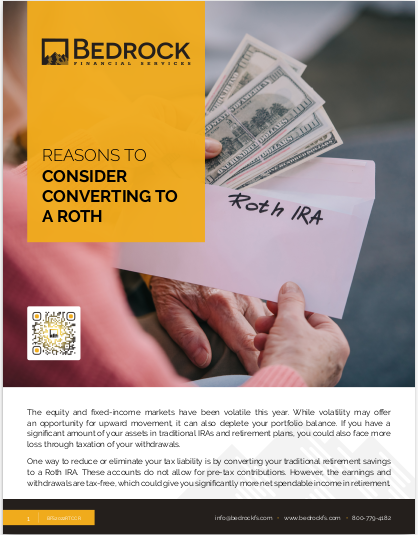Key Takeaways
-
A small yet strategic shift in how and when you ask for referrals can significantly increase your referral rate without feeling intrusive or salesy.
-
Embedding referral triggers at moments of peak client satisfaction is the most effective—and underused—method among financial professionals in 2025.
The Untapped Potential Hiding in Your Referral Process
As a financial professional, you’re no stranger to referrals. They’re the most powerful form of business growth—warm, trusted, and often cost-free. Yet despite their value, referrals are frequently treated as afterthoughts. You may mention them in a closing meeting or tack them onto a quarterly email. But what if a single tweak could quietly triple the number of referrals you get—without changing your service model or increasing your workload?
That tweak is timing. Specifically, timing your referral request to align with the emotional high points in your client journey.
Why the Timing of Your Ask Matters More Than the Ask Itself
Most agents ask for referrals at the wrong time. You might ask:
-
At the end of an annual review
-
When a client completes a financial plan
-
After you’ve solved a complex issue
These seem logical—but often, the moment has already passed. The emotional reward your client felt has either cooled off or been replaced by other concerns.
Instead, the ideal time to ask is during a peak satisfaction window—the moment right after your client experiences value and emotional relief.
In 2025, attention spans are shorter and customer expectations are higher. That means your window to strike is narrow, but powerful if used well.
Where the Referral Trigger Fits Best
To implement this tweak, you need to identify the right placement of your referral trigger inside your existing workflow. Here are some ideal windows to embed it:
1. Post-Enrollment or Approval Confirmation
Whether it’s a successful policy enrollment, investment setup, or approval notification—this is the moment your client feels progress and confidence. Embed a soft referral line in your message or phone call like:
“If you know someone else who’d appreciate this kind of help, I’d be happy to assist them too.”
2. After a Win or Milestone
Did you help them reduce tax liability, get through underwriting, or unlock retirement benefits? Capture that emotional uplift. Follow up with a check-in and use that moment to seed the referral conversation.
3. Client Reviews with Clear Gains
If you’re reviewing performance, showing savings, or presenting growth—those numbers are not just metrics. They’re emotional triggers. Clients who feel grateful are much more open to paying it forward.
Automate the Moment—Not the Message
Automation has its place in 2025. You should absolutely systematize how referral requests are triggered. But never let the message feel generic or mass-produced.
Best Practices:
-
Use your CRM to flag client milestones (e.g., “Policy Delivered,” “First-Year Anniversary,” “Completed Review”).
-
Automate a task or email prompt for you to follow up.
-
Keep the message personal: reference the outcome and how they felt about it.
Avoid auto-sending a cold email that says, “We’d love a referral!” Instead, create a system that prompts you to reach out with warmth, context, and gratitude.
Language That Feels Natural, Not Needy
One of the reasons professionals hesitate to ask for referrals is fear of sounding desperate or pushy. But done well, a referral ask should feel like a compliment to your client.
What Works in 2025:
-
“You’re the kind of person I really enjoy working with. If you know others like yourself, I’d love to help them too.”
-
“Now that we’ve wrapped this up, if someone you care about ever needs guidance like this, feel free to send them my way.”
-
“If you’ve found this valuable, others in your circle might too. I’m happy to be a resource.”
These phrases don’t pressure or impose. They respect the client’s decision while signaling that their experience has been positive enough to share.
Why Clients Want to Refer You—They Just Need a Nudge
Clients aren’t ignoring your referral request on purpose. They’re busy, distracted, and often don’t remember exactly what to say or how to make the introduction.
That’s why the key to getting more referrals is making it easy to refer you. Here’s how:
-
Send a forwardable message. After a good outcome, write a quick thank-you note that includes a brief line they could pass along to someone else.
-
Offer to write the intro. For high-trust clients, you can offer: “If there’s anyone in mind, I’m happy to draft a quick intro email you can forward.”
-
Clarify who you help. Be specific: “I help people within 5–10 years of retirement who feel uncertain about their financial next steps.” That way, you stay top-of-mind when they meet someone who fits.
The Tweak Is Subtle, But the Results Are Significant
This isn’t a script change. It’s not a new app. It’s not a new tool.
It’s the intentional act of asking at the right moment.
In our fast-paced 2025 environment, this is what separates agents who get the occasional referral from those who get a steady flow of introductions every month. The best part? You don’t have to overhaul anything. Just re-sequence what you already do.
How to Track the Impact of This Change
If you’re going to make this tweak, measure the results. That way, you’ll know whether your timing improvements are working.
Track these metrics month over month:
-
Number of referrals requested
-
Number of referrals received
-
Number of referred leads that booked
-
Number that became clients
Compare these numbers with your previous months. Most agents who implement this simple timing shift report referral increases of 2–3x within one quarter.
Training Your Team to Mirror This Approach
If you have team members handling client onboarding, support, or communication, they should be equipped with the same mindset and phrasing.
Train them to:
-
Identify when a client expresses happiness or relief
-
Log that moment in your CRM
-
Prompt a referral message or call from you (or a senior agent)
This keeps the process consistent and ensures you don’t miss key emotional windows, even if you’re not directly involved in every interaction.
Pair This Strategy With Ongoing Relationship Marketing
This timing tweak works best when combined with an already strong relationship-building strategy. That includes:
-
Regular check-ins (quarterly or semiannual)
-
Personalized client updates
-
Educational content tailored to client goals
When your clients feel consistently seen and supported, their willingness to refer becomes stronger over time—not just when asked.
When Not to Ask
While this method is powerful, it’s not universally applicable. Avoid referral asks when:
-
A client is expressing frustration or confusion
-
The result delivered is neutral or below expectations
-
There’s pending complexity (e.g., a case still unresolved)
Timing is only powerful when it aligns with positivity and trust.
Final Thoughts on Reengineering Referrals With One Tweak
Referrals in 2025 aren’t about incentives or gimmicks. They’re about emotion, memory, and trust. By aligning your referral request with a client’s emotional high point, you engage them at a time when they’re most willing to advocate for you.
We built Bedrock Financial Services to support professionals like you who are ready to move from reactive outreach to intentional growth. If you’re looking to simplify your client experience, automate the right actions, and generate consistent referrals without gimmicks, we’d love to help.
Sign up today and see how our systems and support can help you quietly build the kind of referral pipeline most agents only hope for.







